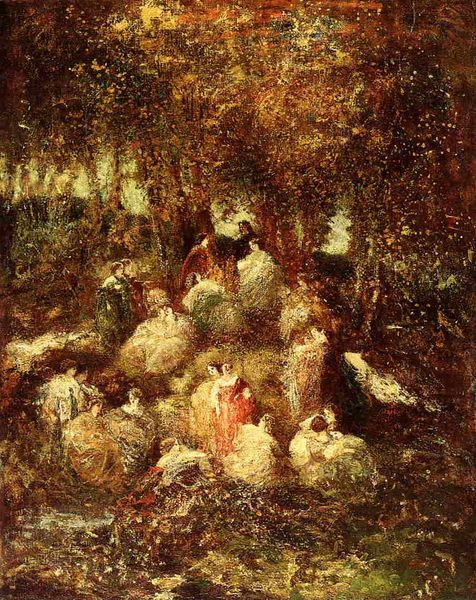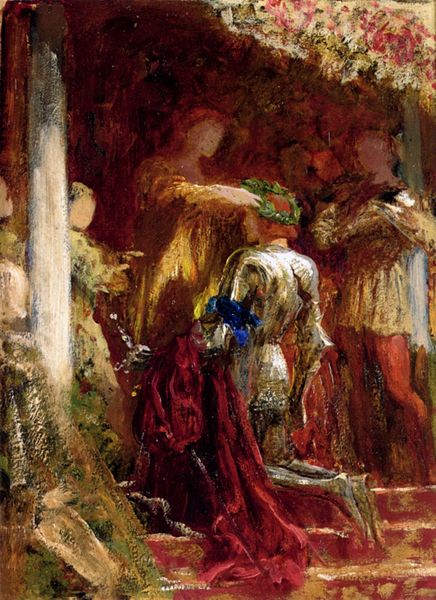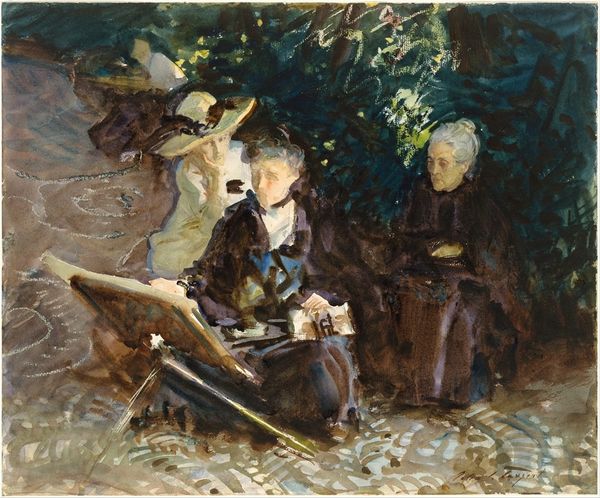
Copyright: Public domain
Editor: We’re looking at “As You Like It,” an 1880 oil painting by Adolphe Monticelli, currently held at the Philips Collection. It's… quite the dense composition. At first glance, I see figures, but they're almost lost in a swirl of impasto and color. It feels almost dreamlike. What stands out to you? Curator: The density you note is precisely what demands our attention. Monticelli’s radical impasto—thick, sculptural layers of paint—transcends mere representation. Consider how the materiality of the oil becomes the subject itself. The title, a reference to Shakespeare, is almost a red herring. Editor: I see what you mean. I was expecting something a bit more literal from the title, but you're right, it’s the paint itself that’s doing the talking. How would you describe the way he's using color here? Curator: Note the pervasive tonality. Earthy browns and golds dominate, punctuated by bursts of reds and yellows. The brushstrokes aren't blended; rather, they're distinct, building up a tactile surface. This disjunctive application denies the viewer a seamless visual experience. It compels one to contemplate the physical act of painting. Do you perceive how the figures become secondary to the paint's presence? Editor: Yes, I can definitely see that now. It's less about the 'who' and more about the 'how.' I had assumed the loose style was just… impressionistic. Curator: True, there are affinities, but Impressionism aims for optical realism. Monticelli abandons that pursuit entirely. His method prioritizes the haptic, not the visual, creating a subjective experience through material density. Editor: That's fascinating. I came in expecting to analyze the figures, but the painting's real story lies within its textured surface. I’ll definitely look more at the materiality moving forward! Curator: Precisely. The pleasure of art often lies in its capacity to destabilize expectations and provoke new ways of seeing.
Comments
No comments
Be the first to comment and join the conversation on the ultimate creative platform.














